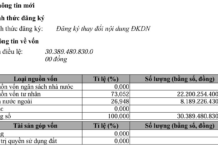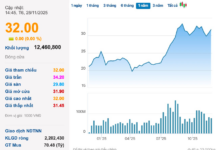Retail Banking in Vietnam: Opportunities and Challenges

Vietnam’s retail banking sector is brimming with potential due to its stable economic growth and supportive government policies. With a population of over 100 million and a median age of just 33, Vietnam boasts a massive consumer market. The rise of the middle class and the affluent has created a significant demand for financial products such as savings, consumer loans, and investments.
Additionally, the Vietnamese government and State Bank have implemented supportive digital transformation policies that are adaptable to different economic circumstances. The government’s “National Digital Transformation Program towards 2025, with a vision to 2030” and the State Bank’s “Digital Transformation Plan for the Banking Industry towards 2025, with a vision to 2030” provide an important foundation for banks to innovate their business models, develop personal financial services, and meet the evolving needs of their customers.
The widespread adoption of smartphones and internet access has also enabled people in rural and remote areas to access digital banking services, helping banks expand their market share and contribute to financial inclusion goals.
However, Vietnam’s retail banking sector also faces challenges in terms of competition, risk management, and technology investment. While purchasing power and borrowing demand are recovering, more stimulus measures are needed to boost them further. Despite increasing per capita income, purchasing power is affected by inflation and rising living costs, leading to a slowdown in consumer loan demand, which directly impacts banks’ revenue from retail credit products.
Financial technology (fintech) companies have emerged as formidable competitors to traditional banks, luring a large number of young customers with convenient financial services such as e-wallets, online payments, and peer-to-peer lending, thereby eroding banks’ market share. This forces banks to continuously innovate and improve their services to stay competitive.
Economic downturns reduce people’s income, affecting their ability to repay consumer loans and increasing the risk of bad debt. This poses a significant challenge to banks in maintaining credit quality and managing risks.
To effectively harness the potential of the retail sector and overcome current challenges, banks need to formulate specific strategies based on their strengths.
Firstly, expanding services to rural and remote areas is a strategic move to increase retail market share. With smartphones and internet access becoming commonplace, rural residents can easily access digital financial services. This allows banks to offer savings, consumer loans, and online bill payment services, enhancing their competitiveness and expanding their customer base.
Secondly, banks should accelerate the digitization of their services and collaborate with fintech companies. To effectively compete with fintechs, banks need to embrace digitization, enhance their mobile applications, and integrate technologies such as artificial intelligence (AI) and blockchain into their operations. Collaborating with fintechs enables banks to leverage the creativity and technology of these companies, resulting in the creation of new and more convenient financial services for customers.
Thirdly, effective credit risk management is crucial for maintaining credit quality. Utilizing AI and big data analytics in customer evaluation enables banks to make more accurate lending decisions and minimize the risk of bad debt, especially in a volatile economic environment.
Fourthly, banks should design flexible financial products. Developing financial products that meet the needs of people during difficult economic times is essential. For example, offering consumer loans with preferential interest rates, flexible savings products, or contactless payment services can attract customers and add diversity to the banks’ product portfolios.
Lastly, to attract more customers to their financial services, banks should focus on financial literacy initiatives, especially in rural and remote areas. This helps customers understand financial products better, making it easier for them to access and utilize the services provided by banks.
What does the future hold for Vietnam’s retail banking sector?
The future of Vietnam’s retail banking will be shaped by banks’ ability to innovate and adapt to rapid technological changes and market demands. For banks, it is not just a race for technological advancement but also a competition to provide the best customer service in the digital age.
Digital transformation will remain a dominant trend, from developing digital banking models such as Digital Banking and Neo-banks to adopting modern technologies like AI, blockchain, and biometrics in their operations. Digitization aims to enhance service quality and improve user experiences, particularly in the retail sector.
Banks will focus on developing multi-channel payment products, integrating modern payment technologies into interbank, peer-to-peer, and electronic clearing services. This will not only increase convenience but also provide seamless transaction experiences for customers.
The trend towards sustainable consumption and green financial products is attracting the interest of many customers, especially the younger generation. Banks will concentrate on developing these products to meet customer demands and enhance their brand image.
Collaboration between banks and fintechs will lead to the creation of digital financial services that better meet customer needs. This will help traditional banks retain their existing customers while attracting new ones, especially from the younger, more dynamic, and convenience-seeking demographic.
With infrastructure development, banks have a significant opportunity to reach and provide financial services to rural and remote areas, reducing the gap between regions in terms of financial access.
Banks will also work on process improvement and reducing paperwork by digitizing records. This increases efficiency, saves time, and enhances customer experiences, particularly in credit and payment transactions.
“FPT and Sun Life Vietnam Join Forces to Elevate Customer Experience with Digital Transformation”
FPT Corporation and Sun Life Vietnam Insurance Company Limited (Sun Life Vietnam) have signed a Memorandum of Understanding (MoU) to forge a strategic partnership. This collaboration, signed on the 6th of November, marks a significant step forward as both entities combine their expertise to enhance their services in the fields of information technology and life insurance.
“Digital Culture Deficit Hinders Digital Transformation”
The “try-fail-fix” or “dare-to-fail” culture is instrumental in fostering an innovative and resilient business environment. This culture encourages a trial-and-error approach, where employees are unafraid to take calculated risks and embrace failure as a stepping stone to success. By embracing this mindset, businesses create a dynamic and adaptive organization capable of staying ahead of the competition.
“Attracting Investment: Vietnam Seeks Opportunities in Qatar’s Areas of Business Strength”
On October 31st, during his official visit to the State of Qatar, Prime Minister Pham Minh Chinh met with a delegation from the Qatar Business Association. The delegation was led by Mr. Sheikh Faisal bin Qassim Al Thani, the association’s chairman and president of Al Faisal Holding Group. The meeting took place in the Qatari capital of Doha.
Optimizing Cross-Border E-commerce Websites: Navigating the Challenges in Ho Chi Minh City
E-commerce in Ho Chi Minh City is thriving, with an impressive 23,870 registered online businesses. This accounts for a significant 47.2% of all online enterprises across Vietnam, showcasing the city’s dominance in the digital arena.







































